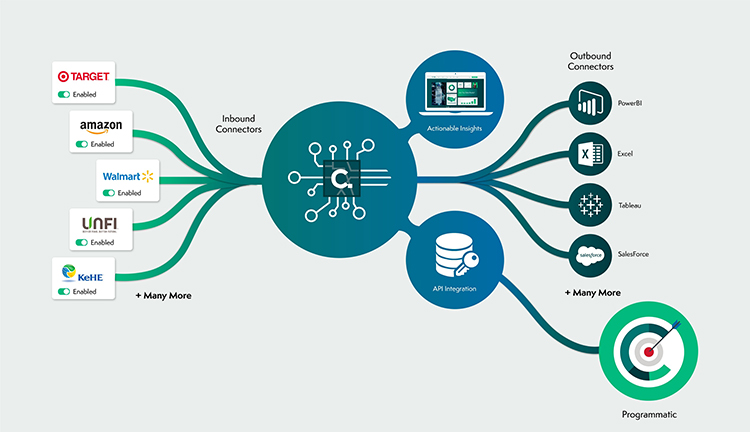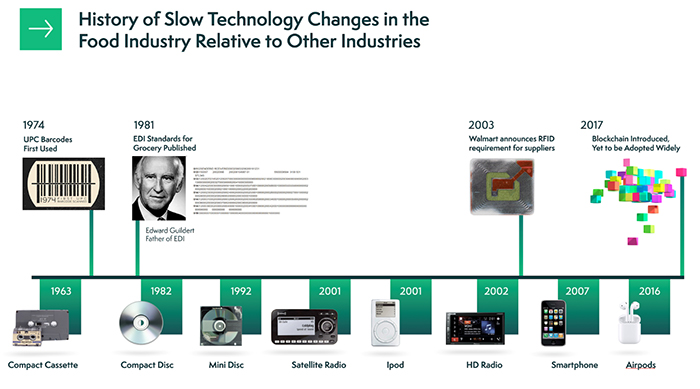The right preventive maintenance approach can improve food safety while saving money. With the right plan, food processing professionals can prevent serious machine failure, decrease maintenance costs and get a better sense of which machines may be more trouble than they’re worth.
However, not every preventive maintenance plan is guaranteed to help processors cut costs. Investing in the right strategy and tools will be necessary for a business that wants to save money with effective maintenance.
How an Effective Preventive Maintenance Approach Can Save Money
To start, the food safety benefits of a preventive maintenance program can help food processors avoid significant troubles down the line. Contamination and recalls will cost time and money.
They can also damage the professional relationships that businesses have with buyers. Recalls are extraordinarily expensive for food and beverage companies, costing an average of $10 million per recall, according to one joint study from the Food Marketing Institute and the Consumer Brands Association (formerly the Grocery Manufacturers Association).
Preventive maintenance can also extend machines’ life spans, giving a company more time before they’ll need to completely replace or rebuild a piece of equipment. Over time, this will help a business prevent machine failure or injuries resulting from improper machine behavior or function. In some cases, it can also mean cheaper repairs and less downtime.
Improving Records With the Right Plan
An effective preventive maintenance plan also generates a significant and detailed archive of maintenance records.
If a plan is implemented correctly, technicians will create a record every time they inspect, repair or otherwise maintain a particular machine. These records will be an invaluable asset in the event of an in-house or third-party audit, as they can help prove that machines have been properly lubricated, calibrated and otherwise maintained.
If a food processing business needs to resell a particular piece of equipment, they’ll also have a full service record that can help them establish the machine’s value.
Over time, the records will also give a highly accurate sense of how expensive the machines really are across an entire business. If the staff records repairs performed, tools used and resources and time spent, professionals can quickly tabulate each machine’s cost concerning man-hours or resources needed. These logs can help single out machinery that may be more trouble than it’s worth and plan future buying decisions.
With a digital system, like a computerized maintenance management system (CMMS), managers can automate most of the administrative work that goes into a preventive maintenance plan.
Modern CMMS tech also provides a few additional benefits beyond streamlining recordkeeping. For example, if a business is up against a major maintenance backlog or trying to balance limited resources against necessary repairs and checkups, a CMMS can help optimize their use of resources. As a result, they can make the most of the time, money and tools they have.
Common Preventive Maintenance Pitfalls
Typically, an effective preventive maintenance plan starts with a catalog of facility equipment. This catalog includes basic information on every piece of equipment in the facility — such as location, name, serial number and vendor, as well as information on how frequently the machine should be inspected or maintained.
Keeping spotty or incomplete records can make a preventative maintenance plan both less effective and more expensive. For example, a partial service record may give an improper idea of how well-maintained certain equipment is. Missing machine information may also confuse service technicians, making it harder for them to properly inspect or maintain a machine.
Too-frequent maintenance checks can also become a problem over time. Every time a maintenance technician opens up a machine, they can potentially expose sensitive electronics to dust, humidity or facility contaminants, or risk damage to machine components.
A maintenance check also means some downtime, as it’s usually not safe or practical to inspect a running machine.
Using the wrong maintenance methods can also sometimes decrease a machine’s life span. For example, certain cleaning agents can damage door gaskets over time. This can eventually cause equipment like a freeze dryer to be unable to create a proper seal.
The equipment manufacturer and technicians can usually help a company know what kind of maintenance will work best and how often they should inspect or tune up a machine.
Going Beyond Preventive Maintenance
Preventive maintenance is the standard approach in most industries, but it’s no longer the cutting-edge of maintenance practices. New developments in the tech world, like new Industrial Internet of Things (IIoT) sensors and real-time artificial intelligence (AI) analysis, have enabled a new form of maintenance called predictive maintenance.
With predictive maintenance, a food processing plant can outfit their machines with an array of special sensors. These sensors track information like vibration, lubrication levels, temperature and even noise. A digital maintenance system will record that information, establishing baselines and data about normal operating levels.
Once the baseline is established, the predictive technology can use fluctuations or extreme variables to predict improper operation or machine failure. If some machine variable exceeds safe operating thresholds, the predictive maintenance system can alert facility supervisors — or, depending on what kind of control the system has, shut down a machine altogether.
The predictive approach can catch issues that may arise in-between checks in a preventive schedule. This can help reduce the frequency of maintenance checks — possibly preventing further machine damage and saving the business money on technician labor.
The data a predictive maintenance system collects can also help optimize equipment for maximum efficiency.
Implementing a predictive maintenance plan will require a bit of a tech investment, however.
Food Processors Can Save Money With the Right Maintenance Approach
Preventive maintenance isn’t just essential for food safety — done well, it can also be a major cost-saving measure for food processors.
Good recordkeeping, a regular maintenance schedule and new technology can all help a business decrease maintenance and equipment costs. For processors that want to invest more in their maintenance plans, a predictive approach can provide even better results.





















